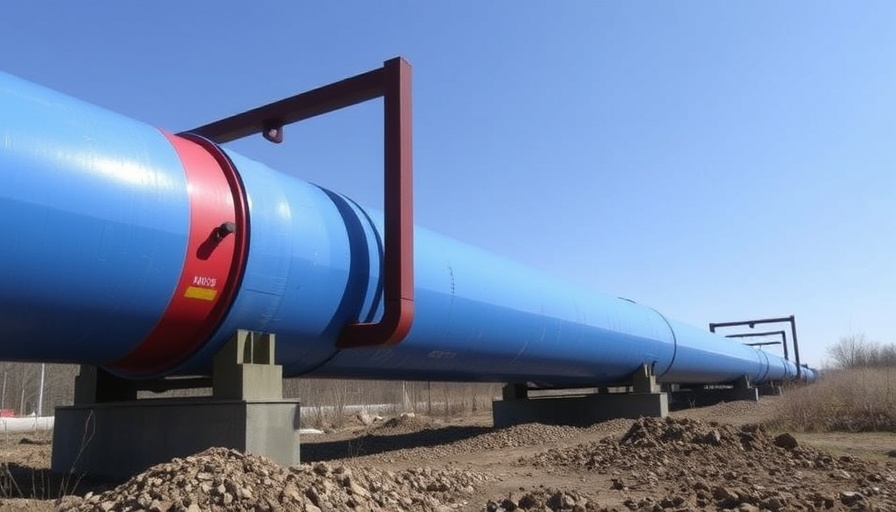
Delivering Safe and Sustainable Water Solutions
The $1.45 billion pipeline project set to deliver Chicago's water to suburban communities showcases a bold step forward in infrastructure development. This ambitious initiative not only promises to enhance water accessibility but also its sustainability, transforming the way communities think about their water supply. As infrastructure continues to evolve, understanding the implications of such projects is crucial for stakeholders in commercial construction.
Why This Project Matters to Local Communities
For the suburban communities surrounding Chicago, this project could mean life or quenching thirst of approximately 600,000 residents who may struggle with inconsistent water supply and quality issues. The pipeline will not only deliver fresh water but also ensure that the regions served are tapping into a resource that meets the growing demand for safe drinking water.
Technological Innovations in Pipeline Construction
As the project progresses, it leverages cutting-edge construction technologies that will reduce disruption to the landscapes they traverse. New trenchless techniques allow for less invasive installations, minimizing the impact on local traffic and ecosystems. Additionally, sensors integrated within the pipeline are designed to monitor flow and detect leaks in real-time, promoting operational efficiency and resource conservation.
Project Management Strategies for Success
Managing large-scale projects like this requires impeccable planning and collaboration among multiple stakeholders, from municipal authorities to construction firms. Utilizing agile project management methodologies could enhance adaptability, helping teams to swiftly address challenges and seize opportunities as they arise. Furthermore, engaging local communities through information sessions can foster transparency and trust, critical components for the long-term success of the project.
Funding and Finance: Making It All Work
The $1.45 billion price tag might induce a bit of sticker shock, but smart financing strategies are underway. By partnering with private investors and exploring federal funding avenues, the project planners are looking to keep costs manageable while minimizing the burden on taxpayers. Understanding the dynamics of project finance can unlock opportunities for profit and innovation, making this an essential case study for construction firms.
Looking to the Future: Treating Infrastructure as a Priority
This pipeline project reflects a larger trend of re-investing in existing infrastructure while incorporating modern construction practices. As urban areas continue to grow, coupling technological innovation with sustainable practices will be key to meeting future demands in environmental health and collective well-being. For those in the commercial construction sector, recognizing these trends will be essential for staying competitive.
In conclusion, as the Chicago pipeline project takes shape, stakeholders across the industry should remain acutely aware of the opportunities it presents. Understanding these developments will not only enhance project management practices but may also inspire innovative solutions for similar challenges elsewhere. The real question is: how will you adapt your strategies in light of such transformative projects?
 Add Row
Add Row  Add
Add 




 Add Row
Add Row  Add
Add 

Write A Comment